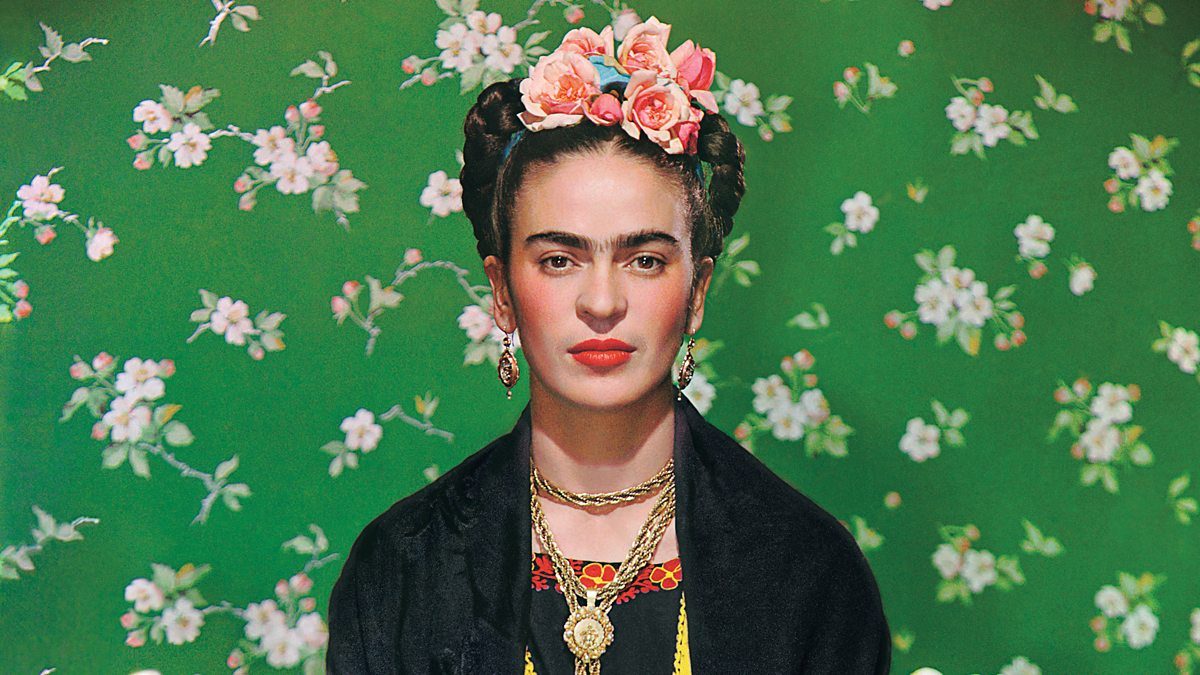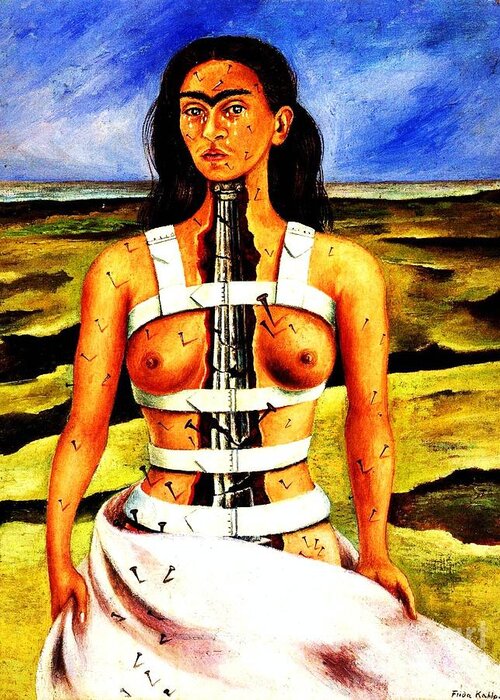

Frida Kahlo, iconic Mexican self-portrait painter, blended personal pain with vivid artistry. Her life and work continue to inspire as symbols of resilience and creativity.
Mexican self-portrait painter, feminist icon.
Considered one of Mexico’s greatest artists, Frida Kahlo began painting mostly self-portraits. Later, she became politically active and married fellow communist artist Diego Rivera in 1929.
Frida Kahlo was born on July 6, 1907 in Coyocoan, Mexico City, Mexico. She grew up in the family’s home where she would later refer as the Blue House.
She contracted polio at age of 6 and had to be bedridden for nine months. To help her to recover, her father encouraged her to do a variety of sports. She played soccer, went swimming, and even did wrestle, which was very unusual at that time for a girl. She kept a very close relationship with her father for her whole life.
Frida Kahlo attended the renowned National Preparatory School in Mexico city in year of 1922. There were only thirty-five female students in that school; soon became famous for her outspokenness and bravery. This was where she first met the famous Mexican muralist Diego Rivera for the first time.
At the same year, Kahlo joined a gang of students which shared the similar political and intellectual views. She fell in love with the leader, Alejandro Gomez Arias. On a September afternoon when both were traveling on a bus, the vehicle collided with a streetcar. This accident left her in a great deal of pain, both physically and physiologically.
After staying at the Red Cross Hospital in Mexico City, she returned home, having to wear full body cast for three months. Her parents encouraged her to paint and made a special easel made for her so she could paint in bed. They also gave her brushes and boxes of paints and she began painting self-portraits during her recovery.
Frida Kahlo once said, “I paint myself because I am often alone and I am the subject I know best”.
In 1928, she asked Diego Riviera to evaluate her work. They soon started a romantic relationship. Despite her mother’s objection, Frida and Diego Rivera got married in the next year. Never a traditional union, Kahlo and Rivera kept separate, but adjoining homes and studios in San Angel. His many infidelities, including an affair with her sister Cristina, led her into deep sadness and constant break-ups. In response to this familial betrayal, Kahlo cut off most of her trademark long dark hair.
As the time passed by, Kahlo added more realistic and surrealistic components in her painting style. In the painting below she expresses her feelings about her second miscarriage in a very personal way.

She did two of her most expressive works by the next couple years. One of them was from Clare Boothe Luce, to paint her friend Dorothy Hale who committed suicide. Horrified, Luce almost destroyed the painting after seeing the result.

Another was The Two Fridas (1939), which Kahlo painted by the time she and Riviera were divorced. It shows two versions of herself, with both of their hearts exposed.

Soon the couple remarried in 1940. The second marriage was about the same as the first one: Both of them had infidelities with other people during the marriage. Kahlo lost ger father on the next year but despite her personal challenges and suffering from chronic pain and health problems, her work continued growing in popularity and was in numerous group shows around this time. In one of her most famous portraits, she depicted herself naked and split down the middle. expressing her physical challenges through art. Frida seeked lots of medical treatments but nothing really worked.

Four years before her death, she was diagnosed with gangrene in her right foot. She couldn’t get out of bed for the next nine months, having to stay in hospital and do several surgeries once again. With the poor physical condition, deeply depressed but with great persistence, she continued to work and paint and had been active with the political movement.
She showed up at the demonstration against U.S. -backed overthrow of President Jacobo Arbenz of Guatemala on July 2, 1954. This was her last public appearance. About one week after her 47th birthday, Frida Kahlo passed away at her beloved Blue House. She was publicly reported to die of a pulmonary embolism, but there are speculations saying she might have died of suicide.
As an icon of female creativity, her fame has been growing after her death.
Her Blue House has become a museum since 1958. The 1970s renewed the interest on her work and life due to the feminist movement. Hayden Herrera published his book on her in 1983, A Biography of Frida Kahlo. It drew more attention from the public to this great artist. On big screens in 2002, the movie Frida got nominations for six Academy Awards and won for Best Makeup and Original Score.

#FridaKahlo #Arte #Feminismo #AutoRetrato



 Adultos
Home
Blog
Metodologia
Loja Online
Contato
Adultos
Home
Blog
Metodologia
Loja Online
Contato
